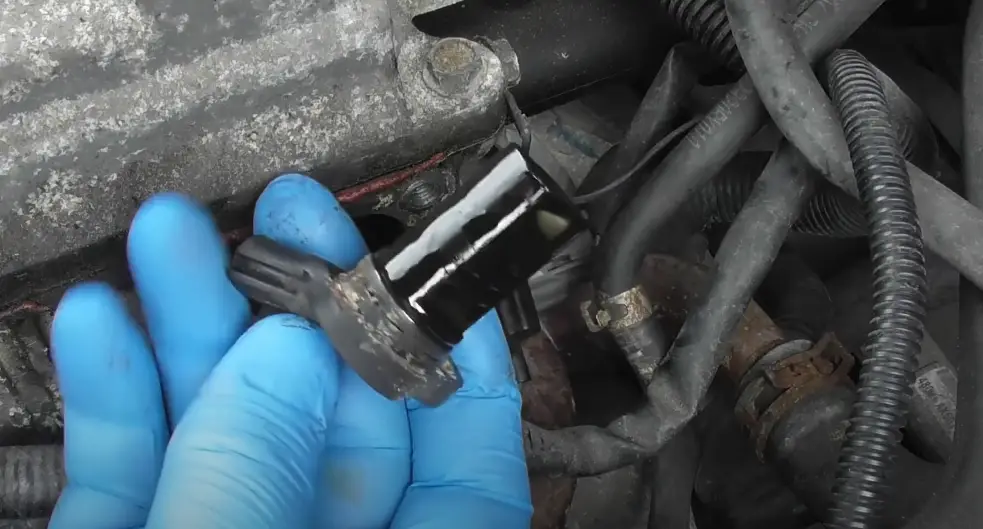The engine crankshaft sensor can fail due to factors like wear and tear, exposure to extreme heat, oil contamination, or electrical issues such as damaged wiring. Over time, these conditions can degrade the sensor’s ability to accurately detect the crankshaft’s position, leading to engine performance problems like misfires, stalling, or difficulty starting. Regular maintenance and addressing issues like oil leaks promptly can help prevent sensor failure.
The engine crankshaft sensor, also known as the crankshaft position sensor (CKP), is a critical component of modern internal combustion engines. It plays a vital role in ensuring the engine runs smoothly by monitoring the position and rotational speed of the crankshaft. This information is essential for the engine control unit (ECU) to regulate fuel injection, ignition timing, and other vital functions.
When a crankshaft sensor fails, it can lead to a host of problems, including poor engine performance, stalling, and even complete engine failure. In this blog post, we’ll delve into the causes of crankshaft sensor failure, explore the symptoms, and discuss potential solutions.
Contents
Causes of Crankshaft Sensor Failure
There are several reasons why a crankshaft sensor might fail. These include:
Wear and Tear
- Heat Exposure: The engine bay is a harsh environment with extreme temperatures. Over time, the constant exposure to high heat can cause the sensor’s internal components to degrade, leading to failure.
- Vibration: The engine produces significant vibrations during operation. These vibrations can eventually damage the sensor or cause it to lose alignment, resulting in inaccurate readings or complete failure.
- Age: Like any other mechanical component, crankshaft sensors have a finite lifespan. Over time, the sensor’s ability to accurately detect the crankshaft’s position can diminish, leading to failure.
Contamination
- Oil Leaks: Engine oil leaks can contaminate the crankshaft sensor. Oil can interfere with the sensor’s ability to detect the crankshaft’s position by insulating the sensor from the reluctor ring, leading to inaccurate readings.
- Debris Accumulation: Metal shavings, dirt, and other debris can accumulate on the sensor over time. This buildup can block the sensor’s ability to detect the reluctor ring’s teeth, resulting in a loss of signal.
Electrical Issues
- Wiring Problems: The sensor is connected to the ECU via wiring harnesses. Any damage to these wires, such as fraying or corrosion, can disrupt the signal from the sensor to the ECU. Wiring issues are a common cause of intermittent sensor failure.
- Poor Grounding: A poor ground connection can lead to voltage fluctuations, which can cause the sensor to provide inaccurate data or fail altogether.
Manufacturing Defects
- Defective Sensors: Occasionally, a crankshaft sensor may be faulty right out of the box. Manufacturing defects can cause the sensor to fail prematurely, often within a short period after installation.
Environmental Factors
- Moisture Intrusion: Water and moisture can seep into the sensor or its connectors, leading to corrosion and eventual failure. This is particularly common in areas with high humidity or where vehicles are frequently exposed to water.

Frequently Asked Questions
Here are some FAQs about the reasons of engine crankshaft sensor failure –
1. What happens if I continue driving with a faulty crankshaft sensor?
Driving with a faulty crankshaft sensor can lead to engine misfires, stalling, and reduced fuel efficiency. In severe cases, the engine may fail to start or run, potentially leaving you stranded.
2. Can a crankshaft sensor be cleaned instead of replaced?
In some cases, cleaning the sensor can temporarily restore its function, especially if contamination is the issue. However, if the sensor is damaged or worn out, replacement is the best option.
3. How often should the crankshaft sensor be replaced?
Crankshaft sensors typically do not have a set replacement interval. They should be replaced when they show signs of failure or during major engine repairs where access is convenient.
4. Is it safe to drive with a crankshaft sensor disconnected?
No, driving with a disconnected or faulty crankshaft sensor is unsafe, as the engine may not run correctly, leading to stalling or poor performance.
5. Can a faulty crankshaft sensor damage my engine?
While a faulty sensor won’t directly damage the engine, it can lead to poor engine performance and increased wear on other components, potentially causing long-term damage if not addressed.
Conclusion
The crankshaft sensor is a critical component of your vehicle’s engine management system. Understanding the common causes of failure and the symptoms to look out for can help you address issues before they lead to more significant problems.